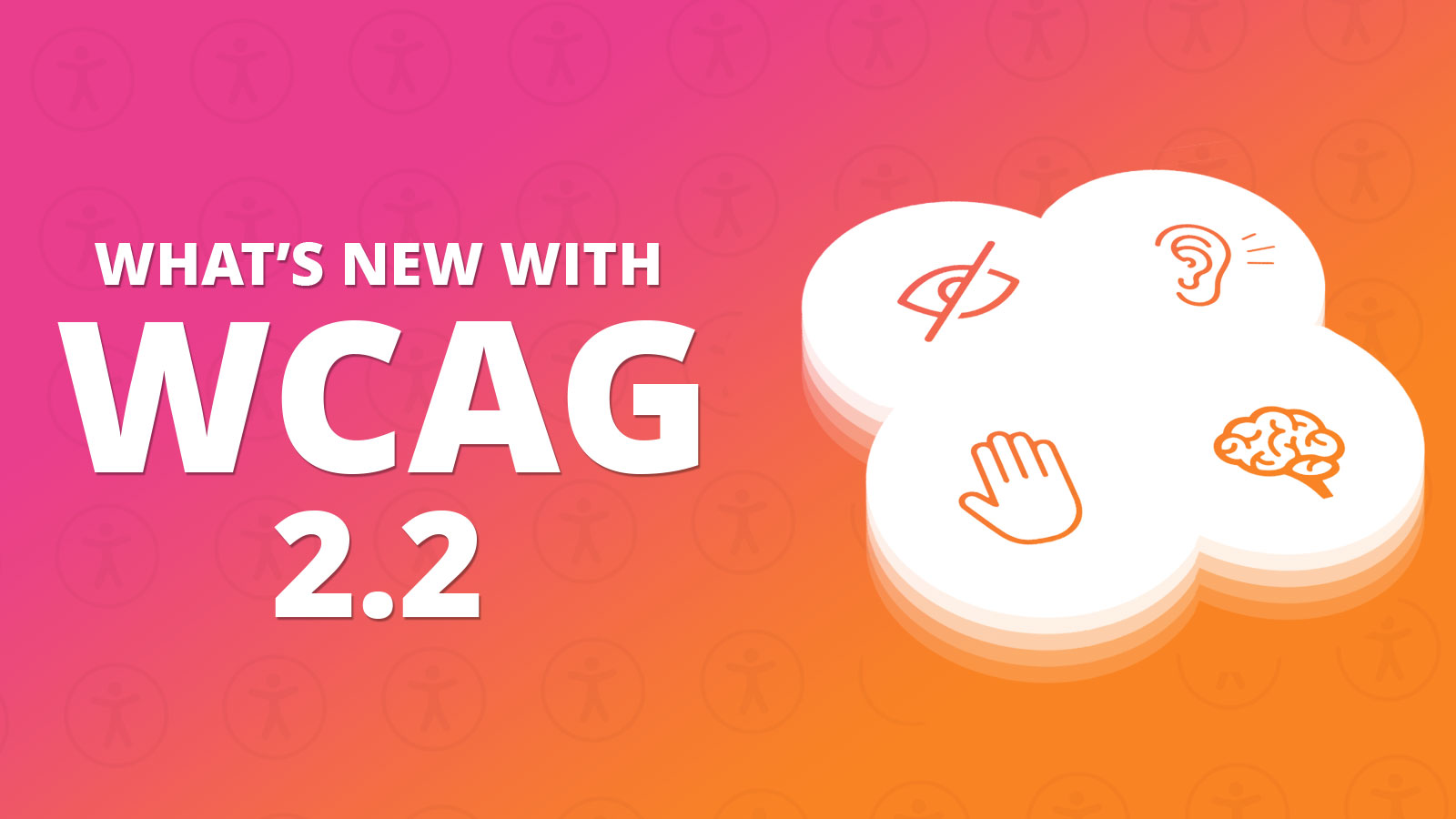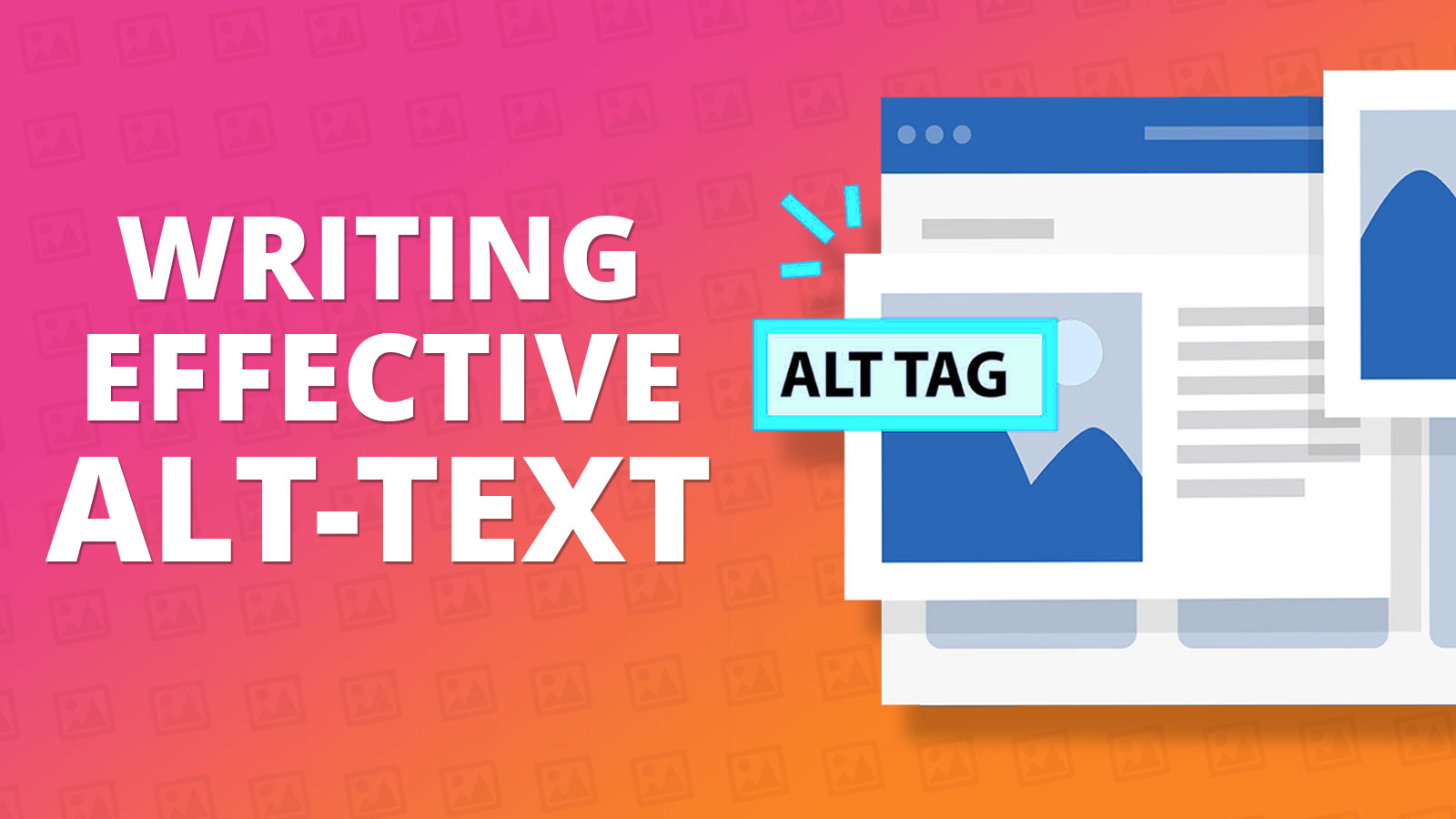Blog
CATEGORY: Accessibility
What's new with WCAG 2.2

Web Content Accessibility Guidelines (WCAG) are a set of technical standards and guidelines created by the World Wide Web Consortium (W3C) to ensure that web content is accessible to people with disabilities. The main objective of WCAG is to provide web developers with a framework of guidelines to ensure that web content is perceivable, operable, understandable, and robust. At least 1 in 5 people report having a disability in the UK, making it crucial to ensure that the web is accessible to everyone.
WCAG is essential for individuals with disabilities, as it provides them with equal access to digital content. The guidelines also benefit developers and businesses, as making digital content accessible opens up their services to a wider audience, which can increase their customer base and profitability. For local authorities, it speaks to a duty to ensure that ALL residents have access to the information, support and care that they are eligible for and with more and more content moving online it is essential that elements of the community are not left behind as they are unable to access what they need.
As Karen Yates, Communications and Marketing Manager at Essex County Council, affirmed
“To me this all means that communications and marketing must be accessible communications and marketing and to not comply is to isolate segments of our population and that undermines our very purpose.”
You can read more about the insights of Essex County Council in Accessible Communication: A new standard set by Essex County Council
WCAG 2.0 was published on 11 December 2008, while WCAG 2.1 was published on 5 June 2018. WCAG 2.2 is scheduled to be published this May.
The WCAG Accessibility Principles
WCAG is organised through four key principles, which are perceivable, operable, understandable, and robust (POUR).
Perceivable: This principle ensures that web content is perceivable by all users, including those with sensory impairments. It requires that text alternatives be provided for non-text content, such as images and videos, and that content be presented in different ways without losing meaning.
Operable: This principle ensures that web content is operable by all users, including those with physical impairments. It requires that all functionality be available from a keyboard, that users have enough time to read and use content, and that content does not cause seizures or physical reactions.
Understandable: This principle ensures that web content is understandable by all users, including those with cognitive and learning disabilities. It requires that text be readable and understandable, that content appears and operates in predictable ways, and that users can avoid and correct mistakes.
Robust: This principle ensures that web content is robust enough to work with current and future user tools, including assistive technologies.
The 3 Levels of Compliance – A, AA, and AAA
WCAG guidelines work with ‘success criteria’ that are organized into three levels of compliance: A, AA, and AAA. Level A and Level AA have been adopted by various international standards and legal requirements.
Level A criteria are the highest priority and are typically the easiest to fulfil. If your product satisfies all of the Level A criteria, the entire site is considered to be Level A compliant. Your site will be accessible to many, though often with considerable extra effort on the part of those living with substantial disabilities.
Level AA criteria yield a truly equivalent experience for most users. By fulfilling all of the Level A and Level AA criteria, your site is considered to be Level AA compliant. This level will generally result in content being accessible to most users, though perhaps not with equivalent access for all.
Level AAA provides advanced accessibility criteria. Sites that fully comply with this level are rare. Organisations will likely pick and choose Level AAA criteria for specific content they are providing or based on desired audience of elements of their site.
What's new in WCAG 2.2
WCAG 2.2 includes new guidance on how to make content more accessible to people with cognitive and learning disabilities. The new success criteria include providing simple language and easy-to-understand instructions, and avoiding complex or ambiguous language. There is also new guidance on how to make content more accessible to people with low vision, including providing high-contrast text and ensuring that text is not too small.
Another important change in WCAG 2.2 is the inclusion of new success criteria related to mobile accessibility. With the increasing use of mobile devices for browsing the web, it is important that websites are designed with mobile accessibility in mind. The new success criteria in WCAG 2.2 include ensuring that content can be easily accessed and navigated using touchscreens and mobile devices, and providing accessible alternatives for complex gestures.
WCAG 2.2 also includes new success criteria related to accessibility in emerging technologies, such as virtual and augmented reality. As these technologies become more prevalent, it is important to ensure that they are accessible to people with disabilities. The new success criteria in WCAG 2.2 provide guidance on how to make virtual and augmented reality content more accessible, including ensuring that content can be navigated using speech input and that alternative text is provided for non-text content.
In addition to these new success criteria, WCAG 2.2 also includes updates to existing success criteria based on feedback from users and developers. For example, there are updates to the success criteria related to keyboard accessibility, to ensure that all functionality can be accessed using a keyboard, and updates to the success criteria related to web page structure, to ensure that content is organized in a clear and logical way.
The new criteria
WCAG 2.2 includes all success criteria from WCAG 2.0 and WCAG 2.1 with no changes to existing criteria. However, one success criterion has changed level. 2.4.7 Focus Visible, Level AA in WCAG 2.1, is a Level A criterion in WCAG 2.2
WCAG 2.2 includes all of WCAG 2.1, plus nine new criteria. Of those, seven are in Level A + AA, the most commonly tested combination of levels.
.
WCAG 2.2 builds on WCAG 2.1, and they are backward compatible: web pages that conform to WCAG 2.2 also conform to WCAG 2.1, which should also conform to WCAG 2.0. If you are required to conform with WCAG 2.0 or 2.1, you can update content to WCAG 2.2 without "breaking" conformance with previous versions.
Further reading
These are the documents for the W3C WAI’s WCAG 2.2 Draft:
WCAG 2.2 Draft: Candidate Recommendation expected to be finalized in early 2023.
WCAG 2.2 Supporting Documents
How to Meet WCAG 2.2: A customizable quick reference to WCAG 2.2 that includes guidelines, success criteria, and techniques for authors to use as they are developing and evaluating web content. The reference includes content from WCAG 2.0, 2.1, and 2.2, and authors can filter in many ways to help them focus on what is relevant.
Understanding WCAG 2.2: A guide to understanding and implementing WCAG 2.2. There is a short "Understanding" document for each guideline and success criterion.
Techniques for WCAG 2.2: A collection of techniques and common failures, each in a separate document that includes a description, examples, code, and tests.
The WCAG Documents: A diagram and description of how the technical documents are related and linked.
Also, the graphic representations provided in silke tides's article are also a useful resource to build understanding.
The Importance of WCAG
WCAG is an essential tool for ensuring that web content is accessible to people with disabilities. As mentioned earlier, at least 1 in 5 people in the UK report having a disability, which means that there is a significant proportion of the population that may face barriers when accessing web content. By following the WCAG guidelines, web developers and content creators can ensure that their content is accessible to as many people as possible.
WCAG compliance is also important for legal reasons. In many countries, including the UK, there are laws and regulations that require websites to be accessible to people with disabilities. In the UK, for example, the Equality Act 2010 requires that service providers make reasonable adjustments to ensure that disabled people can access their services. This includes making adjustments to websites and other digital content.
Failure to comply with accessibility regulations can result in legal action, as well as reputational damage. In recent years, there have been several high-profile cases of companies facing legal action for failing to make their websites accessible to people with disabilities. In some cases, these companies have been ordered to pay significant fines and compensation to affected individuals.
In addition to the legal and reputational reasons for complying with WCAG, there are also ethical reasons. Ensuring that web content is accessible to people with disabilities is simply the right thing to do. People with disabilities should have the same rights and opportunities as everyone else, and providing accessible web content is one way to help achieve this goal.
Conclusion
WCAG is an essential tool for ensuring that web content is accessible to people with disabilities. The guidelines provide a comprehensive set of standards and guidelines for web developers and content creators, covering everything from text alternatives for non-text content to mobile accessibility and emerging technologies.
The new WCAG 2.2 guidelines bring important updates and additions to the existing WCAG 2.1 guidelines, including new success criteria related to cognitive and learning disabilities, mobile accessibility, and emerging technologies. These changes reflect the evolving needs of web users and the rapid pace of technological change.
Download our email accessibility checklist
Solutions
Email marketing healthcheck
We are confident that we can help you, which is why we offer a free healthcheck to identify potential issues with your current programme and free advice on things that could be done to improve it.


